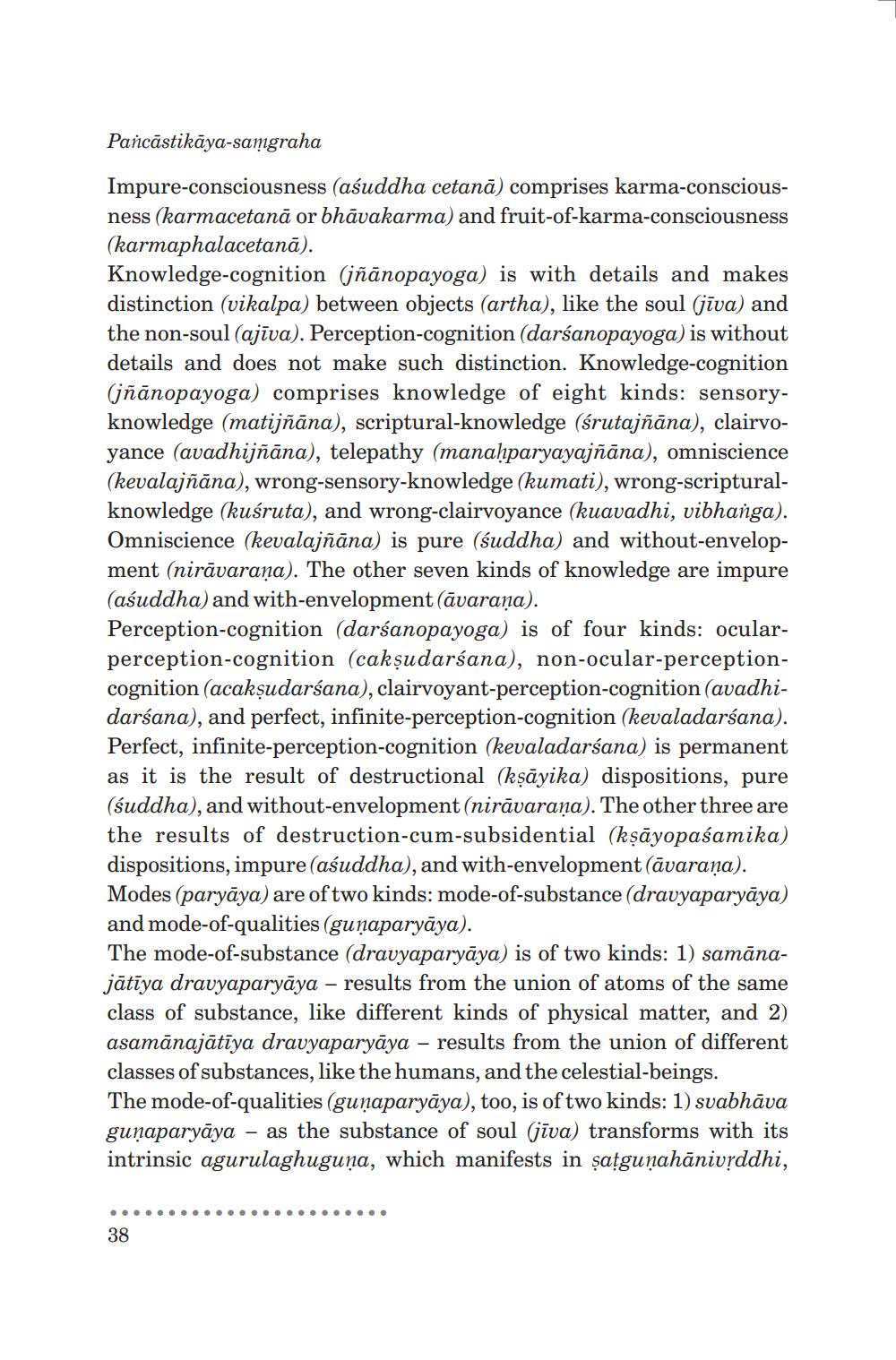________________ Pancastikaya-samgraha Impure-consciousness (asuddha cetana) comprises karma-consciousness (karmacetana or bhavakarma) and fruit-of-karma-consciousness (karmaphalacetana). Knowledge-cognition (nanopayoga) is with details and makes distinction (vikalpa) between objects (artha), like the soul (iva) and the non-soul (ajiva). Perception-cognition (darsanopayoga) is without details and does not make such distinction. Knowledge-cognition (jnanopayoga) comprises knowledge of eight kinds: sensoryknowledge (matijnana), scriptural-knowledge (srutajnana), clairvoyance (avadhijnana), telepathy (manahparyayajnana), omniscience (kevalajnana), wrong-sensory-knowledge (kumati), wrong-scripturalknowledge (kusruta), and wrong-clairvoyance (kuavadhi, vibhanga). Omniscience (kevalajnana) is pure (suddha) and without-envelopment (niravarana). The other seven kinds of knowledge are impure (asuddha) and with-envelopment (avarana). Perception-cognition (darsanopayoga) is of four kinds: ocularperception-cognition (caksudarsana), non-ocular-perceptioncognition (acaksudarsana), clairvoyant-perception-cognition (avadhidarsana), and perfect, infinite-perception-cognition (kevaladarsana). Perfect, infinite-perception-cognition (kevaladarsana) is permanent as it is the result of destructional (ksayika) dispositions, pure (suddha), and without-envelopment (niravarana). The other three are the results of destruction-cum-subsidential (ksayopasamika) dispositions, impure (asuddha), and with-envelopment (avarana). Modes (paryaya) are of two kinds: mode-of-substance (dravyaparyaya) and mode-of-qualities (gunaparyaya). The mode-of-substance (dravyaparyaya) is of two kinds: 1) samanajatiya dravyaparyaya - results from the union of atoms of the same class of substance, like different kinds of physical matter, and 2) asamanajatiya dravyaparyaya - results from the union of different classes of substances, like the humans, and the celestial-beings. The mode-of-qualities (gunaparyaya), too, is of two kinds: 1) svabhava gunaparyaya - as the substance of soul (jiva) transforms with its intrinsic agurulaghuguna, which manifests in satgunahanividdhi, @ @ . . . .. . . . . . . . . 38




